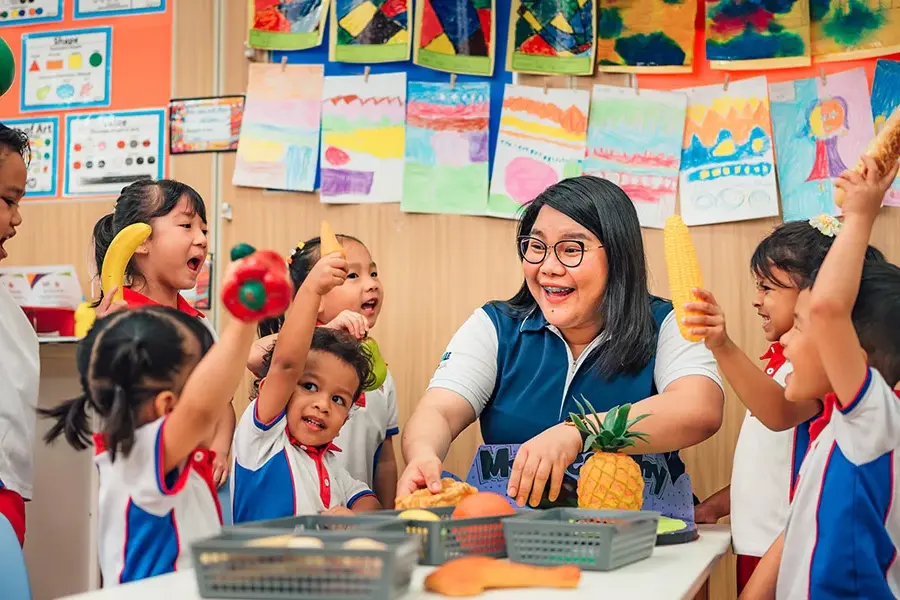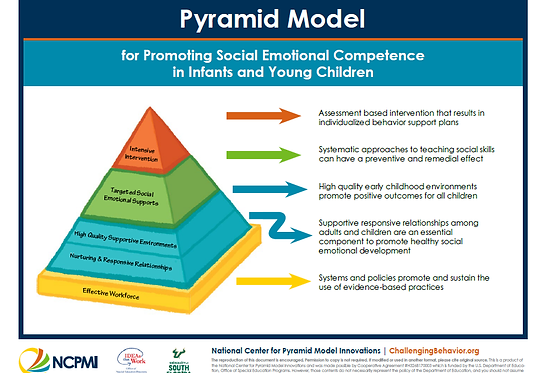Early Childhood
We chose to look into early childhood as it presents unique vulnerabilities, especially during emergencies. Our aim was to understand the needs of caregivers and educators in ensuring safety and wellbeing for children, and to explore how thoughtful design can support these efforts.

1.Domain Analysis
We began by building foundational knowledge understanding key terminology, context, and existing practices within the domain. This ensured that we shared a common language with stakeholders and could engage meaningfully without misunderstanding technical terms.
What Is Early Childhood Education?
Early Childhood Education focuses on the critical years from birth to age 8, when children build the foundation for lifelong learning. This domain includes preschools, kindergartens, and childcare environments that promote cognitive, emotional, and social development through play-based and structured learning. We explored this domain to understand how technology and design can support educators in creating more engaging, inclusive, and developmentally appropriate learning experiences for young children.
Core Concepts:
-
Child Development Stages – Physical, cognitive, emotional, and social development in early years (ages 3–6).
-
Play-Based Learning – Children learn through structured and free play.
-
Learning Outcomes – Focus on motor skills, literacy, numeracy, and social skills.
-
Classroom Management – Techniques for guiding behavior in a positive way.
-
Parent-Teacher Communication – Important for tracking and supporting a child’s development.

Common Pain Points / Issues:
-
Managing classroom behavior and attention spans
-
Lack of resources (e.g., teaching materials, support staff)
-
Emotional toll of dealing with children’s needs
-
Difficulty in managing diverse learning abilities
-
Maintaining documentation and portfolios for each child
-
Communication gaps with parents

2.Stakeholder Interview
We conducted open-ended, non-leading interviews with domain experts to learn about their standard operating procedures (SOPs) and the challenges they face. This step helped us uncover real-world pain points without introducing bias.
Siti Nur Affiqah, Preschool Teacher, Harmoni Preskool
1. What’s a typical day like for you in the classroom? What do you usually spend the most time doing?
- My days usually begins with welcoming the children to the centre and helping them to settle in. The routines are health checks, free play followed by breakfast. Throughout the day I facilitate their learning and play activities and make sure that transitions goes smoothly. I also spend most of my time engaging and observing their development.
2. What kind of tasks or responsibilities do you find yourself doing outside of teaching (e.g., paperwork, parent communication, setting up activities)?
- I prepare and set up the learning materials needed for the learning corners. Other than that I also communicate with some of the parents regularly either via the school's app or during the pick up and drop off timings.
3. What are some of the most challenging or frustrating parts of your job?
- It will be managing the behavioural differences. Some may struggle with emotional regulation while others may have trouble socialising ect.
4. Could you share a bit more about why that’s frustrating or difficult? What would make it better or easier?
- Managing challenging behaviours in a group setting can be overwhelming. It disrupts the flow of the lesson or activity when a child requires extra attention. Since every child is unique, it takes quite alot of time and energy to figure out their needs. It could be better with support from a behavioural specialist, visual learning aids and even a smaller group.
5. When it comes to managing the classroom or activities, are there any repetitive tasks that you think could be improved or even automated?
- Yes, I feel like with tasks like meal logs, incident reports and nappy time could be digitised. It takes time for us to write it down manually.
6. Are there moments in your day where you feel like you’re doing too many things at once or wish you had an extra pair of hands?
- Absolutely. During transitions like getting everyone ready for outdoor play or nap time . Managing a group of toddlers who each need individual attention while also keeping the group moving smoothly can be overwhelming at times.
7. From your experience, are there tools or systems you wish you had that could help support either the kids or yourself better?
- I find that having more sensory materials such as stress balls or calming corners with soft textures could help children regulate their emotions during moments of distress. Having extra sets of prepared materials or activity kits ready in advance would make managing time and group activities a lot smoother, especially when unexpected situations arise.
8. If we were to design something to help with those issues you mentioned earlier, what should we make sure to keep in mind so it actually fits into your classroom?
- It has to be easy to use on the go and ideally mobile friendly since we are always moving around. It should be simple enough to use and should work offline, since WiFi in some parts of the centre can be spotty. Most importantly, it should not add more steps to our day it needs to save time and not create more work

3.Need Formation & Validation
Using insights from interviews, we synthesized preliminary user needs. We then held follow-up interviews to validate and refine these needs, ensuring they were accurate, relevant, and meaningful to the stakeholder.
Identified Needs
Interview Needs:
-
Enhanced Communication between parents and teachers.
-
Parental Engagement in children's educational activities.
-
Streamlined Administrative Processes for school-related tasks.
Validation Interview
1. What types of behavioural challenges do you encounter most frequently during class activities?
Most common behaviours I see are tantrums, refusal to participate and withdrawal. Sometimes children get overwhelmed, especially in group settings or when they're tired or hungry. I also see hitting or grabbing during free play, usually due to difficulty with sharing.
2. How do you currently respond when a child displays challenging behaviour while still managing the rest of the group?
I would ask them to stay with the group while I attend to the child one-on-one. If I’m on my own, I try to address the behaviour calmly without drawing too much attention, using redirection or simple language to help the child regulate. I often position myself where I can get a helicopter view of the group.
3. Are there certain times of day or activities when behavioural issues tend to occur more often?
Yes, transitions can be hard like moving from free play to cleaning up time. Behavioural issues also pop up after naptime when children are still waking up and might feel groggy or disoriented. Free play can lead to conflict too.
4. What strategies or tools do you currently use to help children regulate their emotions?
I use consistent routines, visual schedules, and simple calming tools like soft toys, sensory bottles, or breathing exercises. Emotion cards also help children label their feelings. What works best is giving children choices and using a gentle, predictable tone.
5. Have you had any training or access to resources for managing behavioural differences?
A lot of what I do is based on experience and trial-and-error. I also learn a lot from talking with colleagues, observing children.
6. Is there any system in place to track and reflect on behavioural incidents?
Yes, we usually keep a simple log either or record it down in the centre log book to note any concerning behaviour or incidents. These notes help us look for patterns and adjust strategies if needed.
7. In moments when a child needs extra attention, what kind of support do you wish you had in real time?
I’d love to have calming tools readily available in every part of the room, like fidget items or emotion charts. It would also help to have real-time prompts or reminders like gentle suggestions for what to say or do to guide me in high-stress situations when thinking on my feet is hard.
8. Would having a child-specific emotional/behavioural profile be useful during class time?
Absolutely. Knowing a child’s triggers, calming strategies, or preferences ahead of time would make a huge difference.
9. Are there any existing solutions you've seen or heard of (locally or overseas) that you wish you had access to?
I’ve heard of centres using visual behaviour tracking apps and interactive calm-down corners with sensory lighting and sounds. Something like that would be amazing to have especially if it can be adapted to different children’s needs.
10. Would you be open to using a tech-based tool in your classroom for behaviour management?
Yes, I’m open to it, if it’s easy to use and doesn’t take my attention away from the children.
11. How much time can you realistically spare to interact with a tool while managing a class?
Not much so quick access is key.
12. Would you or your centre have concerns around privacy, data logging, or tech reliance when it comes to children’s emotional data?
Yes, I think we would. It’s important that any data collected is secure, only shared with parents and staff and used in a respectful and ethical way.
4.Literature Review & Market Survey
To support our findings, we reviewed literature and public statistics for evidence of the identified problems. We also explored the current market to check if existing solutions addressed these needs or left gaps our solution could fill.
Behaviour Management in Early Childhood Education

The Pyramid Model for Promoting Social Emotional Competence outlines a tiered approach to managing children's behaviour through supportive environments, targeted strategies, and individualised interventions. While widely used, educators often struggle to apply it consistently due to time constraints and the need to manage groups while addressing individual behaviours. This supports the need for quick-access calming tools, behavioural profiles, and real-time prompts validating our findings that teachers are overwhelmed during transitions and lack support in managing emotional outbursts efficiently.
Existing Options:
Parents Gateway App:
The Singapore government, through the Ministry of Education (MOE) and GovTech, developed the Parents Gateway app to bridge communication between schools and parents. Launched in 2019, the app offers
-
Real-time updates on school activities and announcements.
-
Digital consent forms for student participation in events.
-
Scheduling of parent-teacher meetings.
-
Access to curated parenting resources.tech.gov.sg
This platform has significantly improved parental involvement, with reports indicating that about 98% of public school students have at least one parent actively using the app

Facial Recognition Systems:
-
Schools like Hangzhou No. 11 High School have implemented facial recognition technology to monitor student behavior. These systems scan students every 30 seconds, analyzing facial expressions to determine emotions such as happiness, anger, or confusion .

We decided to pivot away from the early childhood education domain due to ethical and privacy concerns around collecting and managing children's behavioural and emotional data. While the needs were clear and supported by literature like the Pyramid Model, implementing tech-based tools in such a sensitive environment would require rigorous safeguards, approvals, and oversight that were beyond our project’s scope.